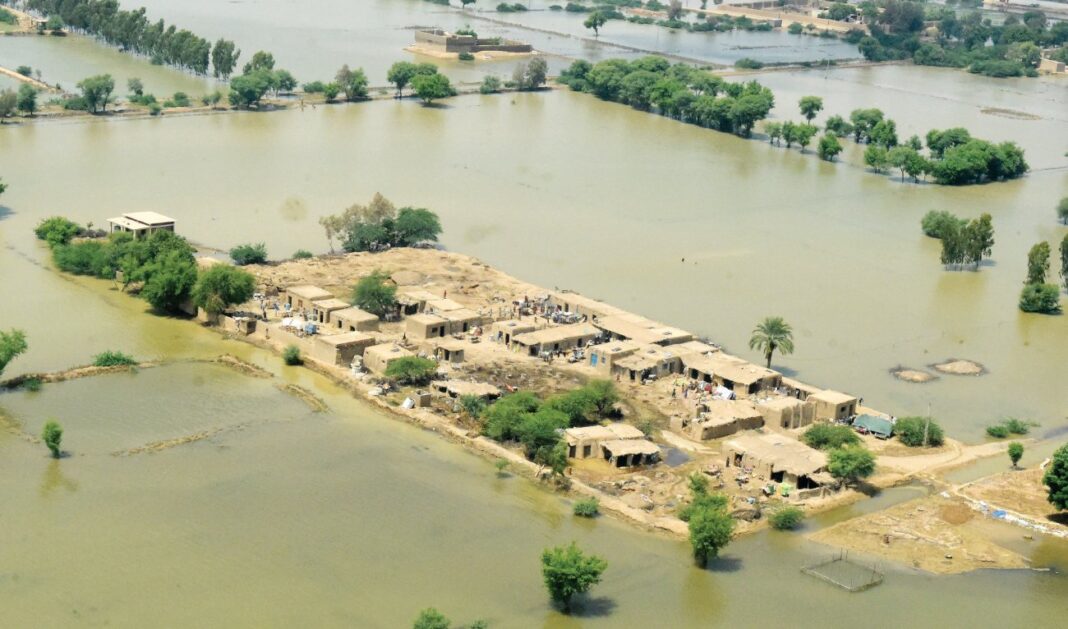KARACHI: Nearly 2.5 million students in southern Pakistan are at risk of being permanently out of school, a provincial official has said, as the country grapples with devastating floods that have ravaged the South Asian country.
Historic monsoon rains and melting glaciers in northern mountains brought cataclysmic floods, which affected 33 million people and killed at least 1,290, including 453 children. One-third of the country is submerged and the extreme weather, widely attributed to climate change, is still expected to spread.
As relief and rescue operations continue across Pakistan, the worst-hit province of Sindh, where at least 492 were killed and more than 14.5 million are currently displaced, the widespread devastation is threatening the future of education for millions of students.
Sardar Ali Shah, Sindh’s top education official, told Arab News the initial survey showed that 15,000 schools in the province have been damaged by the floods, while 5,000 school buildings are currently being used as shelters for flood survivors.
“There are fears these students may permanently go out of school,” Shah said.
“Nearly 2.5 million students are enrolled in these 20,000 schools. We don’t have resources to make 20,000 schools functional even after water is dewatered.”
With school buildings used as shelters, it may take more time even after the floods subsided for victims to find alternative housing, he added, which will also affect when students can return to classrooms.
For now, formal lessons in flood-hit areas are being conducted through temporary learning centers, with the local government launching the program on Monday, Shah said.
Javed Shah, a teacher at a public primary school in Sindh, told Arab News the province took a while to restart lessons in the aftermath of the 2011 floods, which had then killed over 400 people and affected nearly 9 million others.
“It took months to restart classes when flood victims were housed here during the 2010-11 floods,” he said. “And it took us several years to fix our school furniture.”
Sindh has a “poor track record” when it comes to reconstructing damaged schools, independent education scholar Dr. Ayesha Razzaque, told Arab News.
“There’s no reason to suggest that they are on top of things now,” Razzaque said.
This year’s floods may also lead parents “to decide between sending children to schools and helping with work or chores.”
Razzaque said the floods will add to existing problems in the province, as Sindh was “already doing quite poorly” on all education indicators, from the number of students attending school or their performance on math and language skills.
“This is going to take a while to recover from and that too only if the movement is serious about education which doesn’t seem to be the case,” she said, adding that support for students will be crucial.
As the government appeals to the international community to help with relief efforts, Pakistani children are longing for the day they return to class.
“My heart pains for the children and their families who have taken shelter at my school,” seven-year-old Maria Qayyum told Arab News.
“But they should be moved to a better place so that I may resume my studies.”




